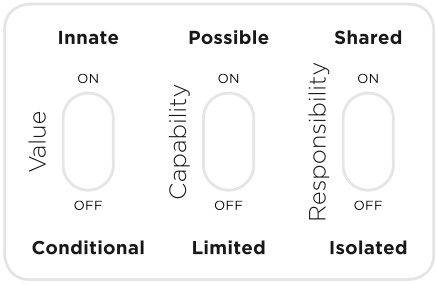ATD Blog
Move From Diversity to Inclusion With the Compassion Mindset
Thu Jul 25 2019

It's critical that organizations hire for diversity—but diversity is not enough. Inclusion is where the real work comes in. Inclusion is about "deliberate efforts to foster cohesive workforces that understand and embrace diverse individuals," says Zoe Mackey in her article, “Why Diversity Is Not Enough, Inclusion Equals Equality.”
The Society for Human Resource Management (SHRM) states, "Creating a culture where people are respected and appreciated requires another level of effort that may not be getting the investment it needs.” Indeed, most diversity efforts fail because they don’t emphasize inclusion alongside diversity.
Inclusion requires a compassion mindset, a fundamental shift in how we see ourselves and others that makes it possible for us to embrace inclusion. It is more than care, kindness, concern, and empathy. Compassion is an action verb originating from the Latin root meaning "to struggle with."
Compassion says, "We are in this together."
What is a compassion mindset? We've identified three switches that must be turned on for compassion to work. All play a critical role in inclusion.

Value
When the value switch is on, we see ourselves and others as innately valuable because we are human. That means we are created equal and deserve to be included as equals. When the switch is off, we see ourselves or others as conditionally valuable. When we allow conditions such as ethnicity, appearance, past experience, or performance to influence our perception of a person's value, it's easy to justify inequalities.
Here are ways to affirm value:
Assume positive intentions.
Empathize.
Validate feelings separate from behaviors.
Open up and create a safe place for people to be vulnerable without fear of judgment.
Capability
When the capability switch is on, we see ourselves and others as capable of contributing. We invest energy in supporting, teaching, mentoring, training, and leveraging unique skills and perspectives. When the switch is off, we minimize a person's capability, so we don't invest in helping them contribute. We stop believing that they can play a role or make a difference, so we don't include them.
Here are ways to affirm capability:
Learn about a person’s gifts, passions, and background.
Look for ways to leverage their unique gifts and personality toward team goals.
Invest in teaching, coaching, and mentoring.
Use mistakes as opportunities to learn and grow.
Responsibility
When the responsibility switch is on, we believe that no matter what happened before, we are each responsible for what happens next. We take personal responsibility for our feelings, thoughts, and behaviors and allow others to do the same. We focus on how we can take ownership for our part in creating a better tomorrow. When the switch is off, we attempt to isolate responsibility, point fingers, and assign blame. Nothing works against inclusion more than the blame game.
Compassion is what makes us human, keeps us connected, and gets us back on track when we lose our way.
Here are ways to affirm responsibility:
Get clear and nonnegotiable about your boundaries and share them in a nonconfrontational way.
Ask others about their values, boundaries, and principles.
Ask for commitments then follow through on them.
Avoid ultimatums and threats; have open conversations about expectations.
Turn on the three compassion switches and you will be able to embrace inclusion in a more meaningful and effective way.
For more on this topic, check out this video from Accenture that captures the essence of a compassion mindset.
You've Reached ATD Member-only Content
Become an ATD member to continue
Already a member?Sign In
